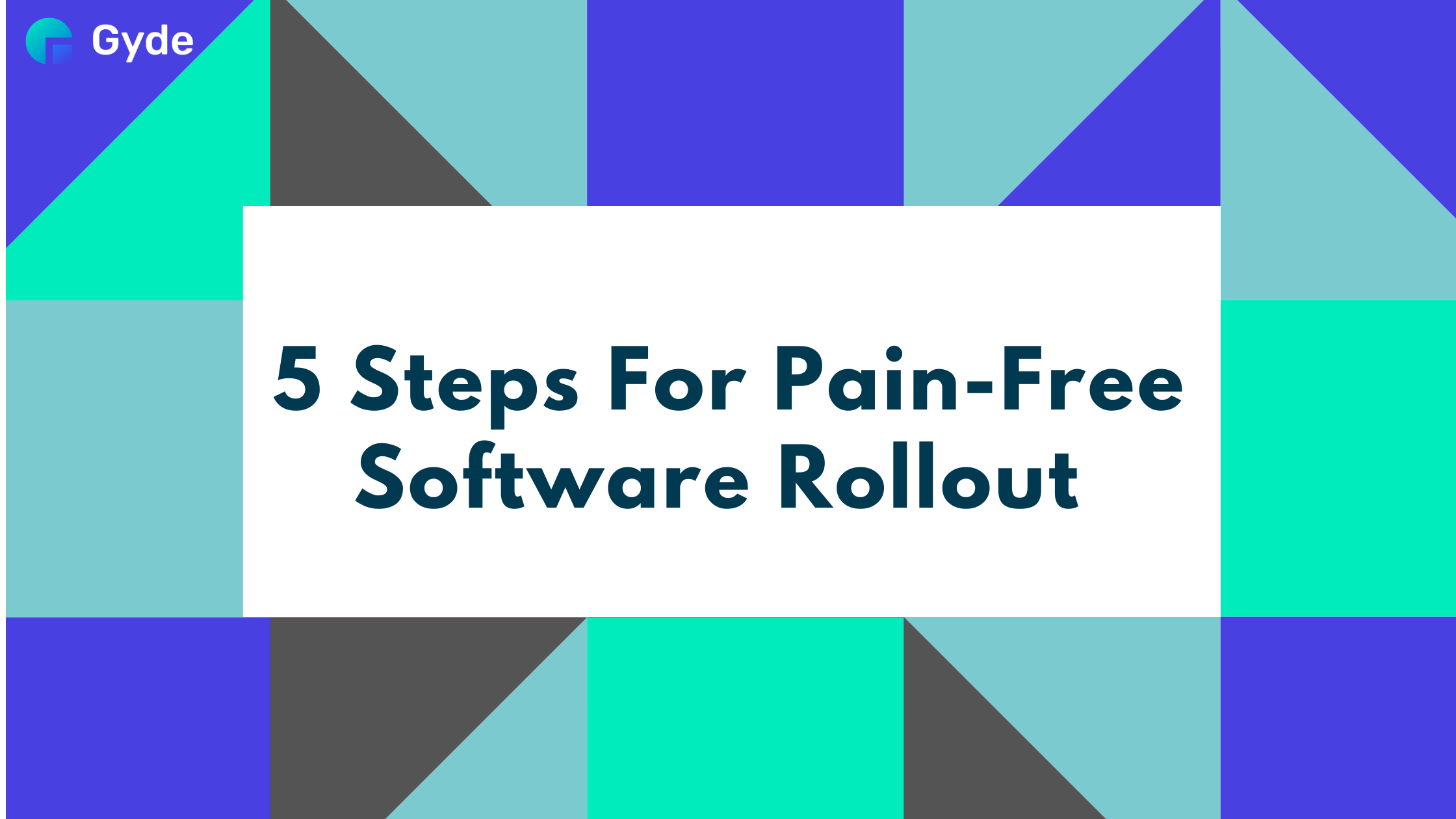When considering a new software for the organization, there is one major thing to keep in mind: this software rollout will be a major factor in company’s success with the new solution.
The value of the investment in a new software is dependent on a successful implementation and the full adoption of the platform. Great adoption can lead to a great return on investment (ROI).
To leverage all the features of the software the great adoption is necessary and for that the successful software rollout is important.
For successful rollout-
1. Establish a Clear Objective-
- Establishing a clear objective before investing in any new software as having a proper roadmap will empower any organization.
- Organizations might know and understand why the business needs a new software but employees might not be on the same page so it’s always better to discuss and share the vision directly with employees.
- Involving employees at this stage is much easier than later in stages of the rollout process.
2. Set New Processes in place-
- Requirements of any business would change over time and need to be smart by including new processes, in line with the latest industry trends and the organization's goals.
- The intersection of these will create a process that will give great results in the long-term.
- It would be ideal to create a positive and adaptive environment in an organization with proper training and onboarding using essential tools like Gyde
- Stating the benefits of the new system to employees will help them to get comfortable and they will get onboard with the organization's vision.
3. Understand Training Needs-
- Before designing a software training for the employees, it is necessary to understand how each user uses the software.
- Modern DAPs have a feature called Application analytics which helps in monitoring:
· How the user is utilizing the software.
· Where they are dropping off.
· What is their engagement rate?
· Which user is struggling where in comparison to the other? - The answers to all these questions will lead to design customized training for each user. Also, it will ensure a great user onboarding experience for your employees and higher engagement rate.

4. Make Software Training a Priority-
- Just rolling out an amazing software will not ensure success. Not being able to utilize the software to its fullest potential will fail the project.
- Giving the right tools to users to operate the software and helping them find their way through the new process to ensure great success.
- The traditional form of training consumes a lot of time and resources which could be used somewhere else for better use.
- Having a contextual training solution like DAP (Digital Adoption Platform) will be useful as it provides all forms of content within the application. It guides the user in real-time and saves valuable time and it will boost their productivity.
5. Seek Feedback-
Organization could have the best analytics system in place, but at the end of the day what matters is how users perceive the deployed software. It is important to gather feedback for improvements.
Feedback can be gathered via multiple channels like:
- Face-to-Face Conversation:- It is one of the traditional ways to garner feedback.
- Meetings:- It’s a collaborative approach where the team comes together and discusses the efficiency of the software.
- Survey Questionnaire:- It’s an ideal way to get feedback if you have a lot of members in your team.
- Internal Forum:- In this method, the user can present their review of the software and the team that is responsible will act upon it.
Software-rollout is not a one-time thing, it is a continuous process. There is no good in doing things hastily. Taking decisions wisely, based on data is important.
Organizations can make most of it just by having a proper strategy, effective communication & collaboration, customized training, and a well-defined roadmap in place.

